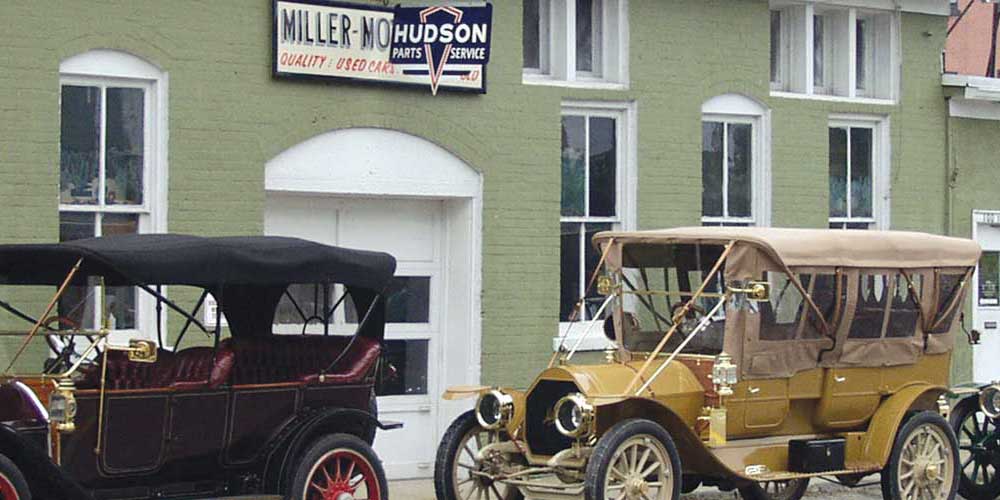By Robert Tate, Automotive Historian and Researcher
Photos courtesy of the National Automotive Heritage Collection
Published: 12.29.2021
EDITOR’S NOTE: It was 65 years ago this week that Preston Tucker died at the age of 53. We remember his legacy with a revised version of this Story of the Week originally published on April 25, 2016.
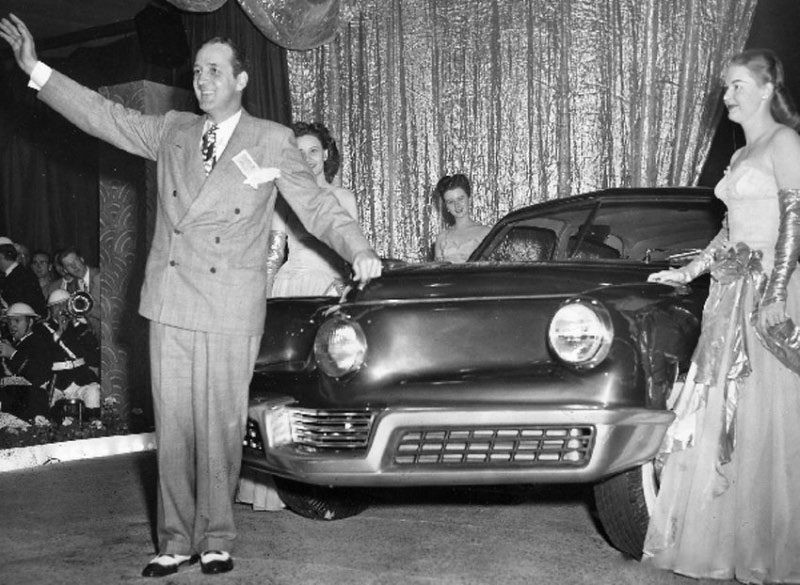 Preston Tucker with his car
Preston Tucker with his car
When you hear the name Preston Tucker, it usually brings up memories from the historic golden age of automotive design and innovative genius.
Tucker had a brilliant mind when it came to automobile design and engineering. Many enthusiasts and automotive historians still talk about his creativity and entrepreneurship. Tucker’s genius and innovation was even captured in a 1988 movie titled, “Tucker: The Man and his Dream.”
The Tucker automobile was completely new and different from other models manufactured during the 1940s because safety was a big factor. Tucker advertising featured taglines like “The first completely new car in fifty years” and “The world’s safest car.”
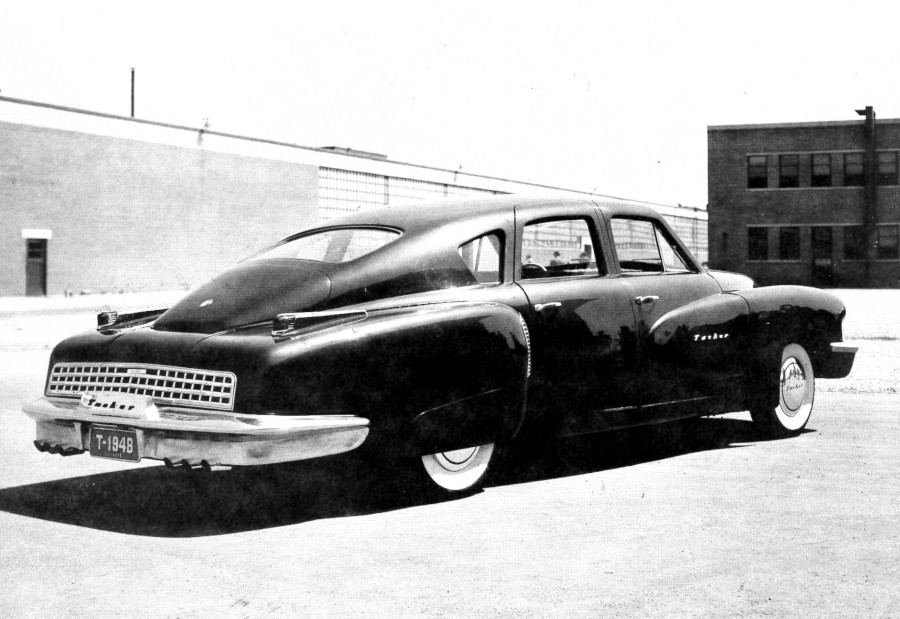 The 1948 Tucker Torpedo
The 1948 Tucker Torpedo
Preston Thomas Tucker was born in 1903, in Capac, Michigan; he was the son of a railroad engineer, who was unfortunately killed when Tucker was 4. At the age of 13, he started working for General Motors as an office boy for the Cadillac Division in Detroit.
Later, Tucker’s journey would take him into auto racing circles when he worked with race car designer Harry A. Miller. During World War II, he returned to the family machine shop, known as the Ypsilanti Machine & Tool Co., in Ypsilanti, Michigan. While there, Tucker designed and introduced a power fuel prototype “Combat” automobile.
After the war ended, Tucker focused his creative ideas and career on an automotive design called the “Tucker Torpedo.” This model offered a very streamlined and new design concept for the consumer market. The design offered an individual suspension for each separate wheel, hydraulic disk brakes (originally developed for carrier-borne planes) along with a 150-horsepower, six-cylinder rear engine. It was the talk of the auto industry.
The concept model was announced to the automotive press in December 1945. Later, the design would also appear in “Science Illustrated” magazine.
As Tucker’s automotive career continued during the 1940s, he had a wonderful dream that one day he would create and manufacture a rear engine automobile with great emphasis on safety. It would be a new automobile with high performance and high mileage that would someday make his dream come true.
While Tucker was planning his next move, he hired the talented designer Alex Sarantos Tremulis. Tremulis also had vast knowledge and experience with the automotive styling process.
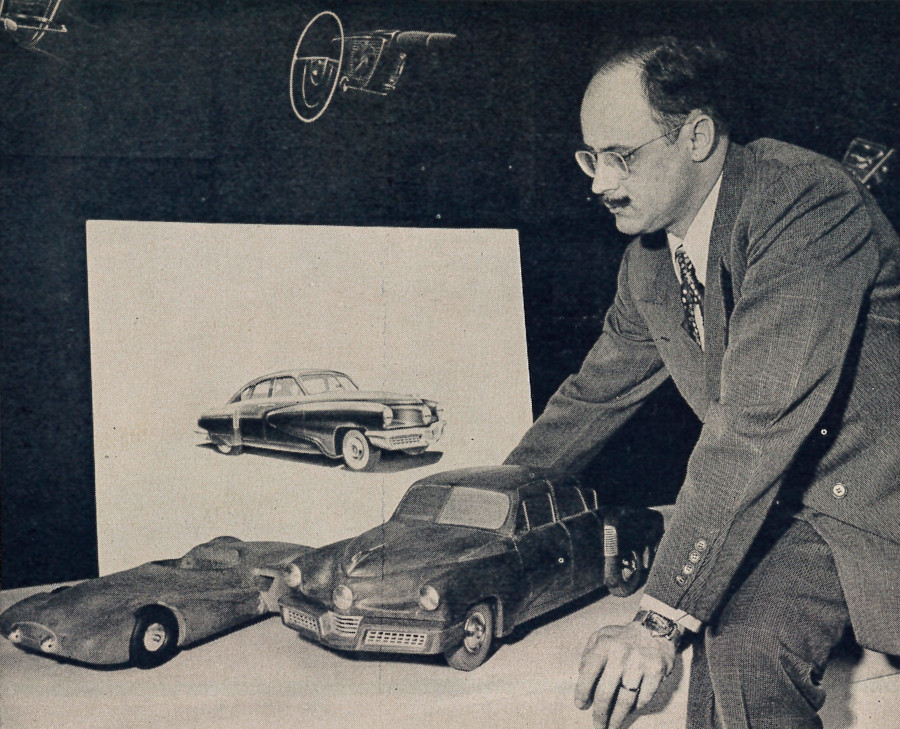 Designer Alex Tremulis
Designer Alex Tremulis
Tremulis joined the Tucker organization in 1947 as chief designer. This hiring marks another great chapter in the automotive history books. Tremulis revised the design of the Tucker Torpedo to create a great looking automobile offering unique styling with the comfort and safety that many consumers sought.
The new Tucker model offered many new safety features including the Cyclops Eye which was located between the head lights. The new design elements pioneered by Tremulis made for a truly unique car that stood out against the competition.
It was the car for the future, and many people were totally amazed at its freshly redesigned look. However, to build such an innovative automobile, Tucker needed a great facility. The Tucker manufacturing plant was located in Chicago, Illinois., and some automotive historians have said it was one of the largest factories in the world.
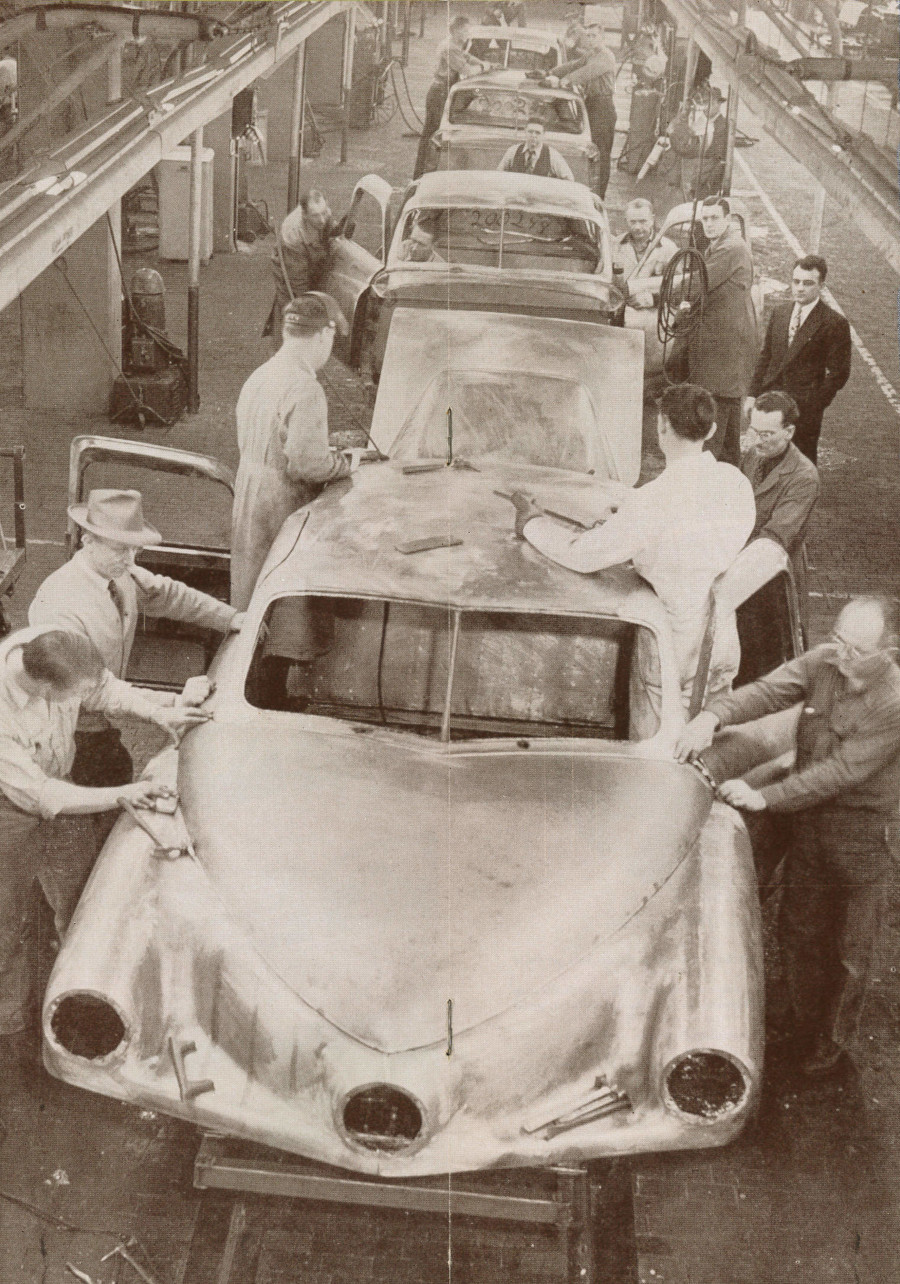 The Tucker factory
The Tucker factory
The spacious Tucker plant in Chicago was originally built during World War II to produce and manufacture B-29 bomber engines. On March 9, 1948, the first completed Tucker automobile was ready for review during a stockholders meeting. On March 11, 1948, the second model was built and completed with a 353 engine. On March 21, 1948, a decision was made to purchase a company called Air Cooled Motors for $1.8 million.
Unfortunately, Tucker ran into a series of setbacks and legal problems. He was accused of serious allegations of a negative bidding process that led to the investigation of the company and corporate papers since April, 1947. In February 1949, a Federal Judge Otto Kerner announced a grand jury investigation into the business practices of the Tucker Corporation.
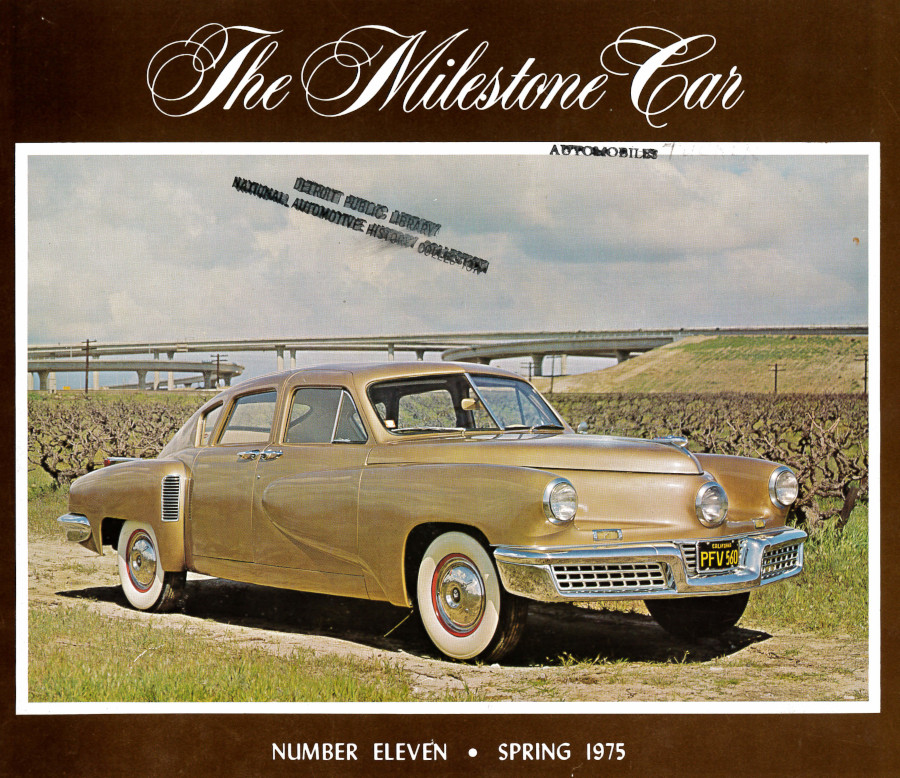 A Tucker on the cover of a publication, 1975
A Tucker on the cover of a publication, 1975
On March 3, 1949, Tucker had lost control of his company to trustees A. J Coinon and J. H. Chartz. In October 1949, a trial had begun with Tucker facing charges of mail fraud and conspiracy. In January 1950, Tucker and all of his associates were acquitted of all charges. Unfortunately, Tucker's suits for damages had totaled $19 million which had created a very disappointing feeling and despair in Tucker's life. Tucker had said “My car was too good.”
After the demise of his automobile company, he took a job as manager of a machine and tool firm. On December 26, 1956, Preston Tucker died of cancer at the age of 53. Today, the Tucker automobile design is his great legacy and will always be part of our American culture and automotive history.
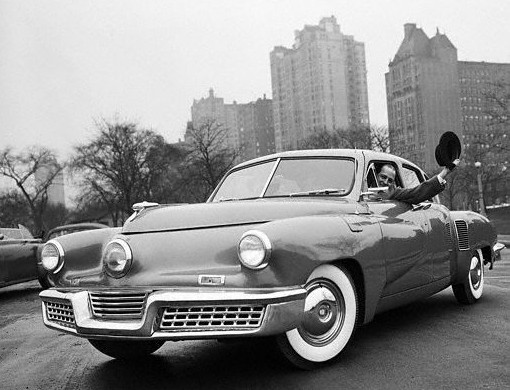 Preston Tucker doffs his hat
Preston Tucker doffs his hat


